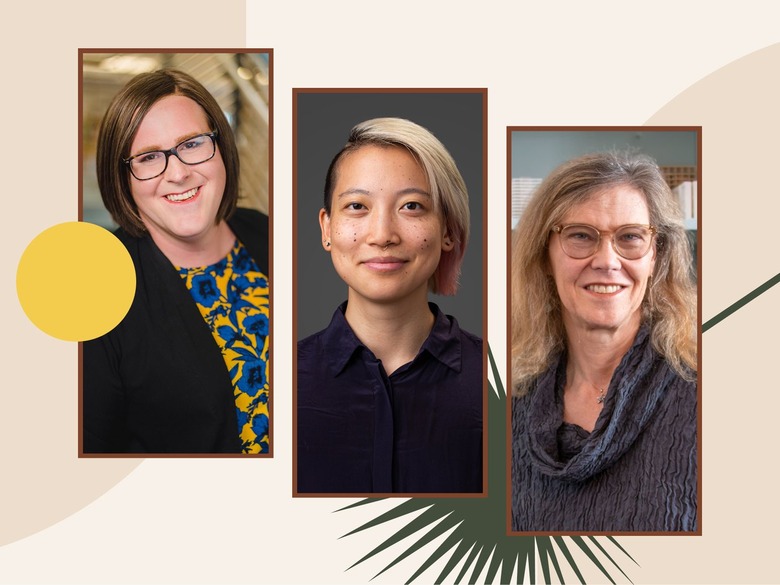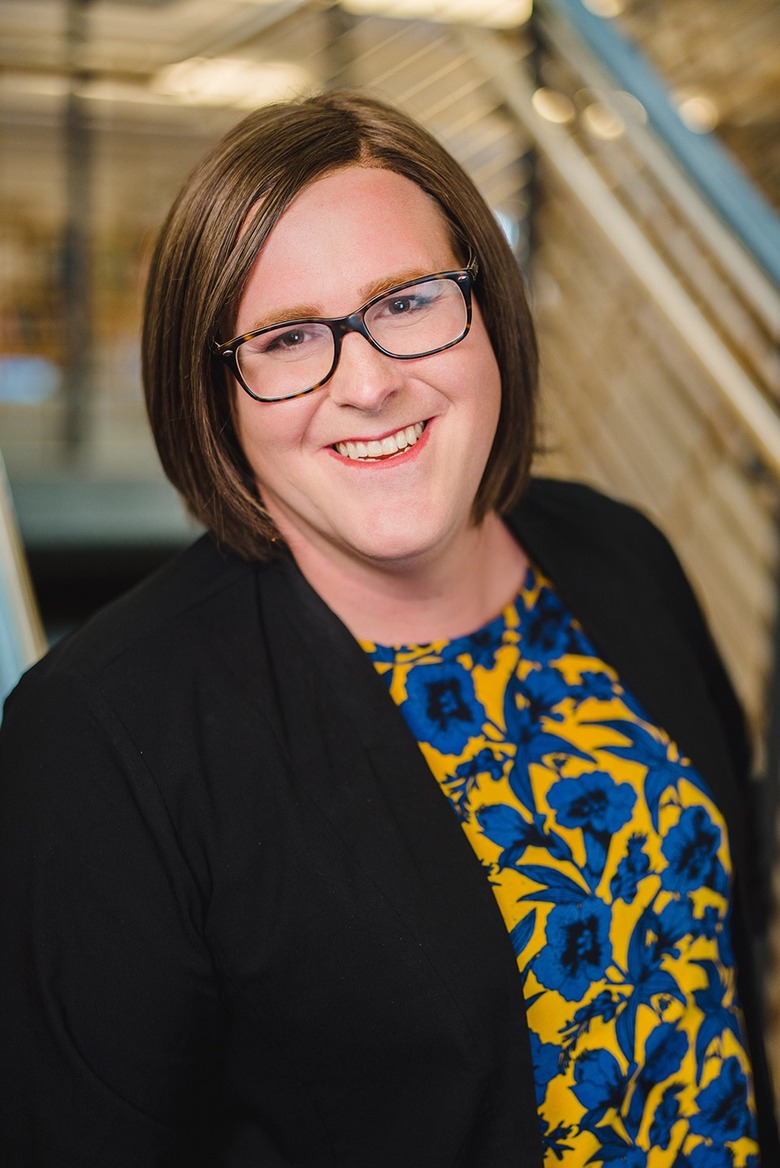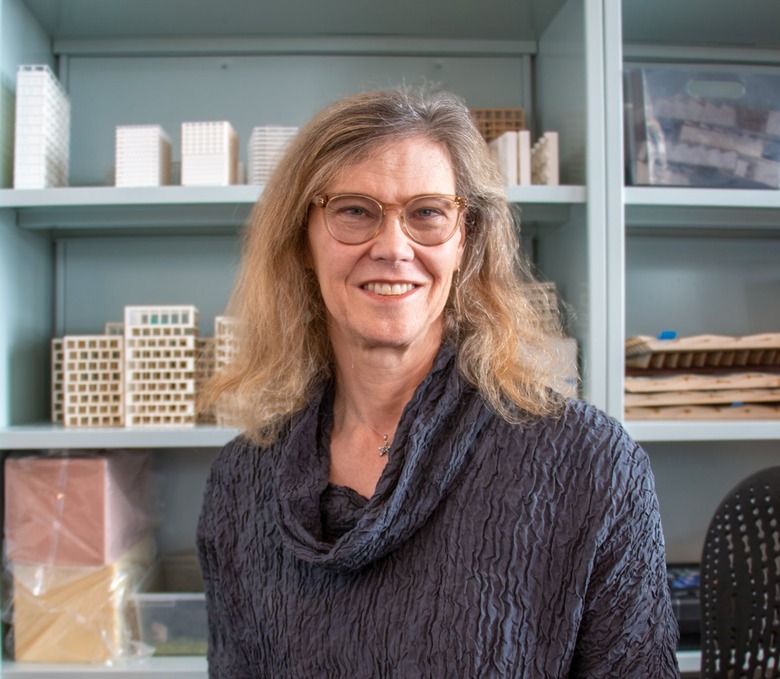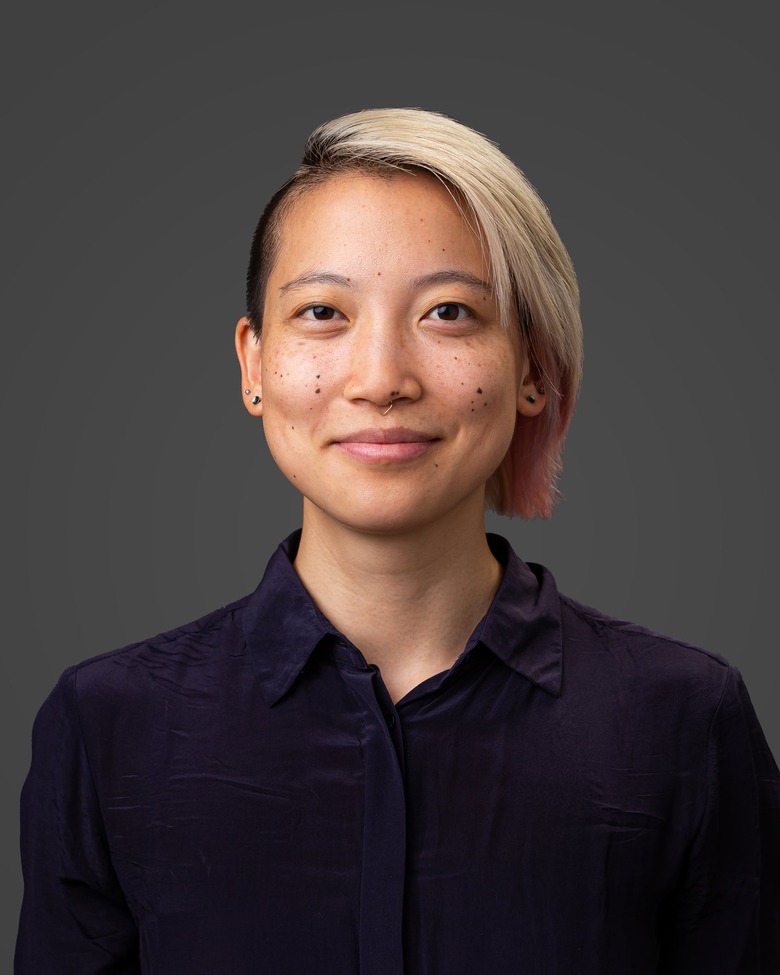Trans And Nonbinary Architects Discuss Making Space And Finding Support In Their Industry
Julia Oderda was first introduced to the world of architecture in high school. Her art teacher included a segment on spatial design, and Oderda found herself enthralled.
"I'd always been fairly artistic — not great but good enough," she tells Hunker. "But I found myself spending every waking moment working on this project, and I loved every aspect of architecture as I learned more."
That initial spark of interest led Oderda, now 40, to pursue a career in architecture. After completing her graduate degree at the University of Utah in 2005, she landed a job at VCBO Architecture, a Salt Lake City-based firm. She has worked there ever since, amassing an impressive portfolio of projects primarily in education design.
However, outside of the office, Oderda was privately grappling with her gender identity. After coming out as a transgender woman to her family and beginning her gender transition, she decided to come out professionally in 2018.
Although she had already worked at VCBO for 13 years, Oderda still feared what would happen if she opened up to her colleagues. She remembers scouring the web in an attempt to find another trans architect who'd seamlessly come out at work. The one person she could find told her they'd been ostracized, fired, and pushed out of the profession, which was "not exactly encouraging."
Oderda's coming out was met with support, but she knows many trans architects aren't as lucky. "That's one of the reasons I've been as open and vocal as I have been," she shares. "I think we need more people who can be found online to help the next generation [of trans architects]."
Trans people's lack of visibility in the field certainly doesn't help. Although recent industry-wide pushes for diversity, equity, and inclusion (DEI) have helped foster diversity in architecture, the profession is still dominated by white cisgender men. Data from the U.S. Bureau of Labor Statistics indicates that as of 2022, only about 30% of working architects in America are women. These disparities are worse for BIPOC architects and worse still for BIPOC women architects.
"Trans women face very similar issues that cisgender women face, so there's a lot of overlap there." — Julia Oderda, principal at VCBO Architecture
The U.S. government has yet to collect data on LGBTQ+ representation in architecture, but groups like Equity by Design have attempted to rectify this. For its 2018 Equity in Architecture Survey, the architecture collective surveyed more than 14,000 architects globally. Less than 10% of respondents said they were lesbian, gay, or bisexual. Just 60 respondents — 42 of whom were working architects — said they are nonbinary, which is only one type of trans identity. "Nonbinary" describes a person whose gender identity does not fit neatly into the male-female binary. Since respondents weren't asked more broadly if they are trans, it is unclear how many trans men and women participated.
For context: The Williams Institute, UCLA's LGBTQ+ policy think tank, estimates that 1.3 million Americans adults are trans, which includes trans men and women and those who are nonbinary. That's about 0.5% of the general U.S. adult population — a slim proportion, but still larger than 60 nonbinary architects out of the 14,000-plus accounted for in Equity by Design's survey. Since more than 300,000 (1.4%) of today's youth identify as trans, these gaps could become even more stark as they reach adulthood and enter the workforce.
So, yes, architecture has a diversity problem, but the tide is beginning to change. Thanks to out-and-proud architects like Oderda, emerging trans designers now have possibility models to look to when navigating situations like coming out or transitioning on the job. Some firms are also taking steps to make their workplace more welcoming to trans people, often in collaboration with trans people who already work there. This can look like establishing a protocol with HR to ease the transition process for employees who come out at work or hiring trans DEI speakers to educate people.
There is still plenty of work to be done, especially for BIPOC trans architects who are dually disenfranchised by systemic transphobia and racism. But the industry's progress since 2018 — when Oderda struggled to find just one out trans architect — bodes well for a more inclusive future.
Architecture's Homogeneous History and Evolving Future
Architecture's Homogeneous History and Evolving Future
Like many disciplines under the science, technology, engineering, and mathematics (STEM) umbrella, architecture's legacy of homogeneity is, well, by design. The field as we know it today builds upon centuries of design practices across different cultures, geographic regions, and eras of history.
Architects use the principles of mathematics and engineering to design buildings. In many advanced societies throughout history — for instance, ultra-patriarchal classical Greece and Rome — education on these topics was often reserved for wealthy men. Women in ancient Greco-Roman society were typically primed for marriage and motherhood, with only the wealthiest obtaining any formal education. Forget architects — in classical Greece, women weren't even considered citizens, per the Metropolitan Museum of Art.
It's no mistake that neoclassical architecture, which emulates the majestic look of ancient Greco-Roman buildings, is favored by the same politicians who oppose equal rights for women and LGBTQ+ people, as reported by Platform. Who could forget when President Donald Trump called for federal buildings to be remodeled in this style toward the end of his term?
"That was all clearly related," Helen Bronston, a transgender architect who is also researching the history of architecture for a doctoral dissertation, tells Hunker. "It's like, 'Make America Great Again.' How do you make it great? Make it look like ancient Rome. And we know how well that went for all the minorities in Rome."
Granted, ancient Greco-Roman architecture is just one historical example, and the field has made considerable strides toward equity and inclusion in the centuries since. In the U.S., progress began in earnest in the late 19th century. The University at Buffalo School of Architecture and Planning reports that in 1873, Mary L. Page became the first woman to earn an architecture degree in the U.S. Come 1881, architect Louise Bethune became the first American woman to start her own firm, according to Bloomberg.
Circa 1958, just 1% of registered U.S. architects were women, per the American Institute of Architects; by 1999, that figure rose to nearly 14%. Women continue to join the profession in growing numbers, which is meaningful in the context of trans visibility too. "Trans women face very similar issues that cisgender women face," Oderda notes, "so there's a lot of overlap there."
But architecture's longstanding legacy of homogeneity has left a lingering impression. The vast majority of architects who have received the Pritzker Architecture Prize, also known as the "Nobel Prize of architecture," are men. In fact, the Pritzker only went to a woman architect, Zaha Hadid, for the first time in 2004.
On an individual level, tacit cultural norms often discourage women and trans people from pursuing a career as an architect. If they do "make it" in the field, HMC Architects states that they are typically paid less and given fewer opportunities than their cisgender male counterparts.
A 2021 report published in the journal Science Advances found that LGBTQ+ STEM professionals experience harassment, professional devaluation, and career limitations at disproportionately high rates. Often, these negative interactions are fueled by misconceptions about LGBTQ+ architects' perceived inability to be objective.
In reality, no architect (or design choice, for that matter) is truly objective. Arbitrarily ascribing neutrality to straight, cisgender architects only reinforces the systemic biases that already pervade architecture and deters architects who don't fit that description from showing up as their authentic selves at work.
Inclusion and equity shouldn't be novel concepts for architects. In 1990, the Americans with Disabilities Act introduced new accessibility guidelines for buildings nationwide. This law "helped push architects" to consider equitable access for people who have a disability at every turn, which has had positive ripple effects throughout the field, says Oderda.
"Thinking of inclusivity — whether it's implicit and in the design process or it's whom you're working with, who's in the room — is really, really important," A.L. Hu, a queer; nonbinary; and Taiwanese American architect, facilitator, and organizer, tells Hunker. Many trans architects do this innately. Their subjective lived experiences inform how they approach their work, resulting in more equitable design solutions. And that's a good thing.
Take it from Bronston, an associate and architecture discipline lead at SmithGroup. Recently, she designed the interior of a hospital building for California Pacific Medical Center in San Francisco. She deliberately worked to ensure it would feel welcoming to people from different racial and ethnic backgrounds, who would be the end users of the building.
"To me, that just highlights how important it is to have diverse architects designing and thinking about these spaces," she says. "If you're part of those groups or close to folks in those groups, you understand their needs more intimately, and you're able to make design choices that reflect that."
Building More Trans-Inclusive Workplaces
Building More Trans-Inclusive Workplaces
Like Oderda, Bronston, 59, came out as a trans woman after she'd already established a sizable body of work. The San Francisco-based architect actually launched her career decades ago at SmithGroup, her current employer, but left the company in 2005. During that hiatus, she came out and began her gender transition.
One factor that pushed Bronston out of SmithGroup years ago was the company's lackluster commitment to DEI. There was "some lip service provided," she remembers, but it all felt like talk. "And it can be hard to do good work if people are not valuing you."
After working for various other firms, Bronston rejoined SmithGroup in 2015. Her recent experience at the company has been much more positive. She also suspects that her professional coming-out journey helped pave the way for other trans architects at HMC Architects, one of her previous employers.
Ultimately, the onus to create trans-inclusive workplaces shouldn't fall on trans people. Firm leaders and HR professionals should be collaborating to make their companies more welcoming. Luckily, there are plenty of resources out there to help them do so, including DEI Guides for Equitable Practice from the American Institute of Architects, a leading industry organization.
Clearly committing to trans inclusion is a key first step, says Oderda: "Proper language is important but so is making sure that your workforce represents those goals." However, addressing representation gaps is just one part of the work. Since white cisgender men usually call the shots at architecture firms, their company policies rarely reflect the unique needs of women or trans employees.
For instance, trans people who choose to medically transition need health insurance plans that cover gender-affirming health care. They also need a streamlined process to change their name and pronouns in a company's IT system. If a firm hires trans employees but doesn't adequately accommodate their needs, then its DEI initiatives aren't empowering; they're performative.
Like Bronston, Hu, 32, has also witnessed companies make hollow statements about DEI. "In all my years of activism, I've realized that talks about the state of diversity and inclusion in architecture are very surface-level discourse or linked to capital," they share. "It's like, how do [your policies] affect the actual people who are working at your firm?"
Hu is a design initiatives manager at Ascendant Neighborhood Development, a nonprofit affordable housing developer in Harlem, and a staunch advocate for equity in architecture. They serve as a core organizer with Design As Protest, a collective of BIPOC designers working to make design and architecture more inclusive, and Dark Matter U, another collective that educates on anti-racist design practices.
Building these coalitions with other trans architects and BIPOC architects has been a huge source of solace and inspiration for Hu, and they encourage their peers to do the same.
"In all my years of activism, I've realized that talks about the state of diversity and inclusion in architecture are very surface-level discourse or linked to capital. It's like, how do [your policies] affect the actual people who are working at your firm?" — A.L. Hu, design initiatives manager at Ascendant Neighborhood Development
"Know that there is a community of queer architects who will support you, even if they're not at your firm or where you are right now," Hu says. "There's a ton of work to be done, but I'm starting to choose to celebrate the spaces of resistance that I'm a part of and the joy that we build together rather than ruminating on how terrible the industry can be."
Oderda echoes Hu's advice with the caveat that her experience as a trans woman in architecture is just that: hers. She also recommends that closeted architects who want to come out at work research the nondiscrimination laws in their area. Although federal law prohibits employee discrimination based on sexual orientation and gender identity, state laws are much more variable, per the Movement Advancement Project.
Additionally, Bronston encourages trans architects who have "any kind of responsibility or institutional support" at their firm to make themselves as visible and approachable as possible.
"Be out and be visible because the younger staff who are going through things need to see this," she says. "Even if it's not about being trans, even if it's just about being different in some way, some other staff member is going to look to you and say, 'Wow, that leader is vulnerable about their issues. They've been open about what they've gone through, so they may understand what I'm going through or be able to support me.'"



